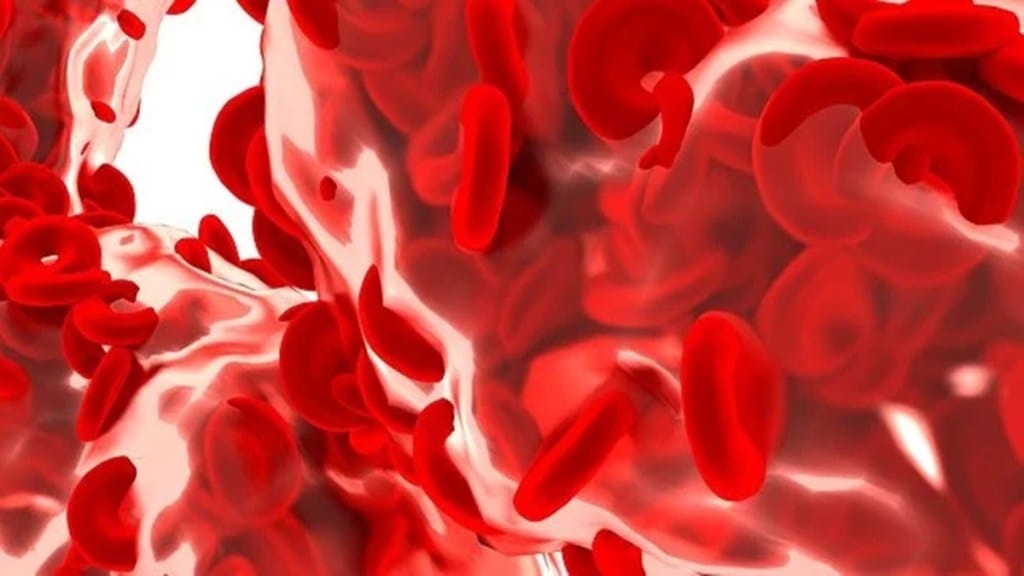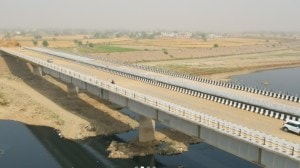By Suryaprabha Sadasivan
In the realm of healthcare, the timely availability of adequate and safe blood and blood products are critical factors in saving lives. India faces a significant burden of trauma and surgical cases, a high prevalence of blood disorders, postpartum haemorrhage, and communicable diseases. In light of these, ensuring access to safe and sufficient blood becomes a fundamental need of the healthcare system.
However, in India, particularly in rural areas, access to these life-saving resources remains a huge challenge due to several factors such as demand-supply gaps owing to low voluntary blood donation, absence of blood banks or fragmented and poor interconnectivity between existing blood banks, and inadequate storage infrastructure and transportation systems.
In India, with around 65% of the population living in rural areas and many in challenging terrains, ensuring a consistent supply of safe blood to remote areas is a daunting task. The country’s healthcare system is grappling with poor voluntary blood donation rates and fragmentation and disorganization of blood transfusion services. This predicament intensifies during emergencies when time-sensitive delivery of blood becomes paramount.
In this context, India’s remarkable growth in its digital health ecosystem can be a game-changer. The adoption of telemedicine, health app-based medical support, and electronic health records has expanded access to healthcare services and improved patient outcomes. In recent years, India has also recognized the potential of drones in healthcare delivery. Drones can overcome infrastructural challenges and geographical barriers, making them valuable tools for reaching remote and underserved populations with medical supplies, and diagnostics, and even facilitating access to blood.
There are a few remarkable success stories from across the globe which can be a good reference point for India to transform its own blood transfusion system through drones. For example, Rwanda, a country in East Africa, has successfully implemented drone technology to transport blood and medical supplies. In partnership with a private drone delivery company, Rwanda has established a robust infrastructure to deliver blood products to remote areas with limited access to healthcare facilities. These drones have significantly reduced the delivery time for critical supplies, saving countless lives in the process.
However, one of the critical points to note in the case of Rwanda is its robust universal health care system which reaches over 90 per cent of the population backed by a comprehensive electronic health data system which enabled a lot of insights for technology-based innovation such as drone delivery to be effective in catering to the needs of the communities through the strengthened response of the health systems.
Recently, The Indian Council of Medical Research launched its iDrone initiative to mark a significant milestone in leveraging technology to enhance blood delivery systems. In the trial run, the ICMR successfully demonstrated the viability of using drones to transport blood bags, offering hope for a more efficient and reliable blood supply chain in the near future.
Integrating drones into the strengthening of India’s blood transfusion system can yield numerous benefits. Firstly, drones have the potential to reach remote locations swiftly, ensuring timely delivery of blood and saving lives in critical situations. Secondly, drones can enhance the efficiency of the blood supply chain by reducing the risk of delays, spoilage, and wastage. With real-time tracking and temperature-controlled compartments, drones can maintain the integrity and quality of blood products during transit. Additionally, the use of drones can optimize costs by minimizing the reliance on traditional transportation methods, which often entail significant logistical expenses.
With India’s thrust in making it’s digitizing its health systems backed by a strong electronic health record, integration of drone-based delivery of blood and critical medicines can be transformative in improving health outcomes and reducing the economic cost of health burden in the country.
One of the key objectives of the National Blood Policy is to make the latest technology available for operating blood transfusion services and ensure its robust functioning. In line with this agenda and recognizing the immense potential of drone technology in improving blood transport, the Indian government must look at collaborations with drone manufacturers, logistics companies, and technology experts to establish a robust and sustainable drone blood and blood products delivery system especially targeted at rural areas and underserved locations. By leveraging public-private partnerships, the government can ensure the seamless integration of drones into the existing healthcare infrastructure, complementing the efforts of blood banks, hospitals, and medical professionals.
Technology has the potential to enhance access to safe blood, but it is crucial to recognize that the actual availability of blood relies on individuals voluntarily donating. Unfortunately, in India, the realization of a culture that promotes voluntary blood donation remains a distant aspiration. This is primarily due to widespread misconceptions, misinformation, and ignorance surrounding the impact and safety of blood donation. Additionally, many people are unaware of the importance of donating blood without waiting to be asked.
While it becomes important for the government to invest in strengthening the blood transfusion system through strategic collaborations and by providing necessary policy and legislative support, there is also a crucial need for a behavioural change campaign that encourages individuals to voluntarily donate blood. By capturing and centralizing data on blood banks and availability through the government’s e-raktkosh portal, it opens up the possibility of integrating this information with future drone delivery centres. This integration would offer an innovative solution to optimize the demand-supply dynamics and ensure efficient distribution of blood when and where it is needed most.
India can establish a robust, efficient, and accessible technology-driven blood supply chain, setting a new benchmark in its digital healthcare transformation and inspiring other nations to follow suit.
(The author is a Vice-President and Healthcare Practice Lead at Chase India. Views expressed are personal and do not reflect the official position or policy of the FinancialExpress.com.)







